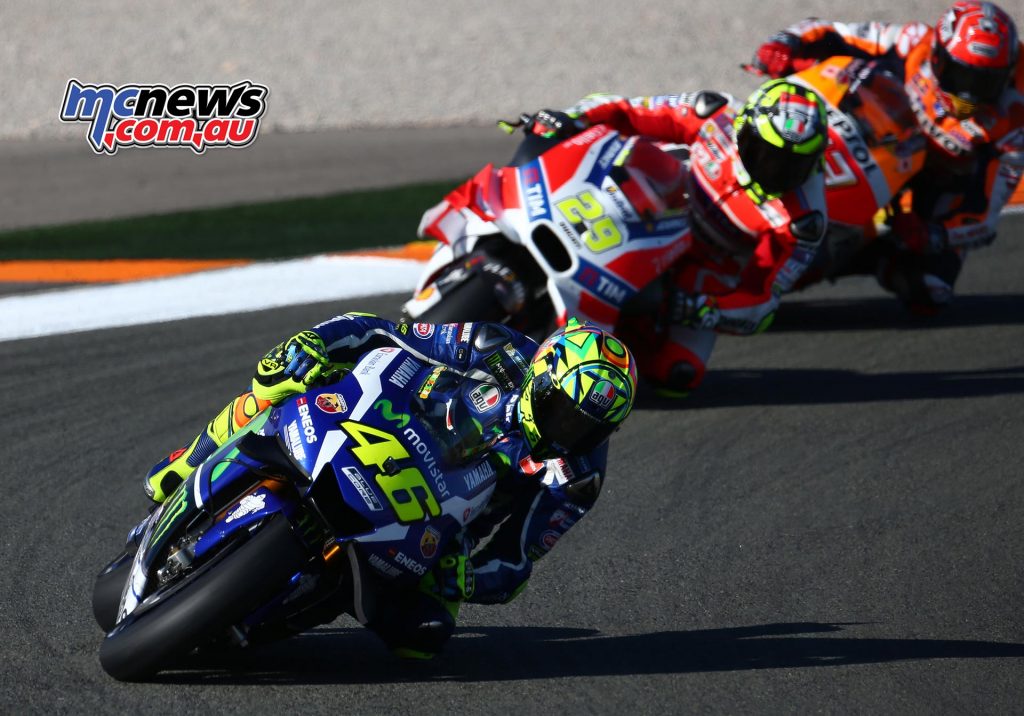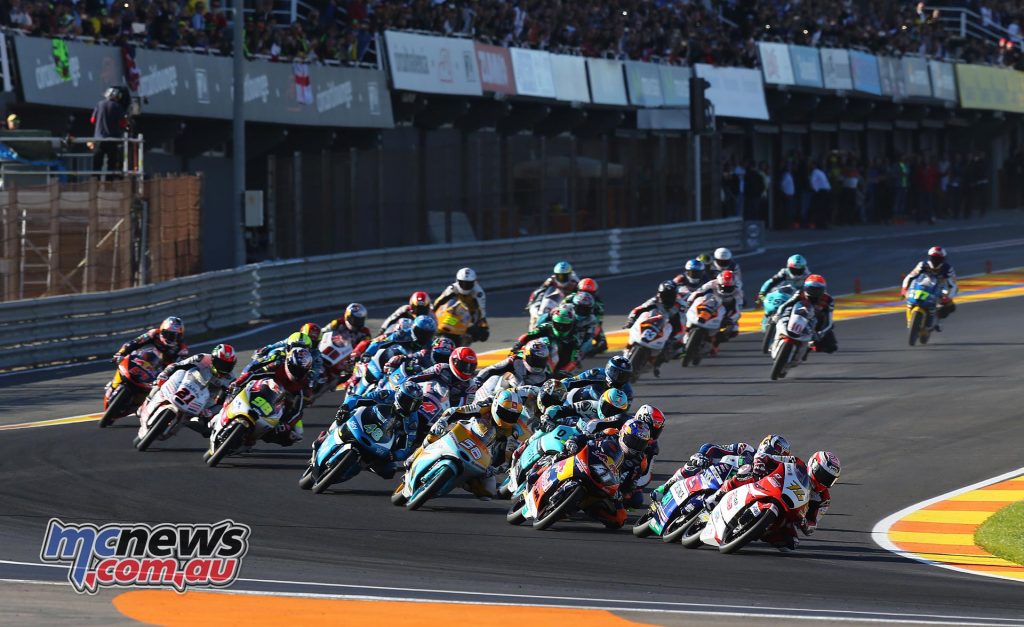2017 MotoGP Technical & Sporting Regulations

FIM Grand Prix World Championship Decision of the Grand Prix Commission

The Grand Prix Commission, composed of Messrs. Carmelo Ezpeleta (Dorna, Chairman), Ignacio Verneda (FIM CEO), Herve Poncharal (IRTA) and Takanao Tsubouchi (MSMA) in the presence of Javier Alonso (Dorna) and Mike Trimby (IRTA, Secretary of the meeting), in a meeting held in Valencia on 12th November 2016, made the following decisions:
Technical Regulations Effective Season 2017
MotoGP Class Sensors
Currently, MotoGP class teams may use non-homologated sensors in all free practice sessions and warm up. Because FP1, FP2 and FP3 are timed for inclusion in QP1 and QP2 these are, in effect, qualifying sessions. In future, use of non-homologated sensors is only permitted in FP4 and warm up.
MotoGP Class Aerodynamic Evolution
At the last meeting of the GPC in Motegi a limit on the number of upgrades that a manufacturer can make to the design of their fairing or front mudguard during the season was imposed. It has now been agreed that Manufacturers in their first season of participation are not subject to this restriction and can make unlimited changes subject, of course, to designs complying with regulations.
Tyre Pressure Management
Teams are already required to respect tyre use parameters which have been agreed in consultation with the tyre suppliers. A new regulation has now been agreed that prohibits the use of any device on the wheel to control or adjust tyre pressures whilst on track.
Safety Lights
It is no longer a requirement for the rider to be able to operate the safety light whilst on the motorcycle. (This is managed by the machine electronics).
Track Familiarisation
Previously, riders using road-homologated machines for track familiarisation, that are the same capacity as the class of the rider, were required to submit details of the machine to be used to the Technical Director for approval. To remove this requirement a list of permitted changes to the motorcycle will be included in the regulations which defines which parts may be changed.
Moto3 Chassis
Subject to certain restrictions on upgrades to performance parts and the use of 2017 sensors, teams are permitted to use a 2016 chassis in 2017.
Engines
The regulation has been clarified and now states that the machine may be propelled exclusively by an internal combustion engine.

Sporting Regulations Effective Season 2017
Interrupted Races and Restarting
The regulations already state that to be classified in the results of a race, whether interrupted or not, the rider must enter the pit lane, riding or pushing their motorcycle, within five minutes of the chequered or red flag being displayed.
When a race is interrupted after three laps have been completed then the same condition will now apply to be eligible to participate in any restarted race.
Restarted Races – Penalties
Any start position penalties applying to a rider in the first race. e.g. a drop of grid position or starting the race from pit lane, will now be considered to have been served at the original race start and will not apply to the restarted race, except when the first part was for less than three laps in which case the penalties will carry forward to the restart.
Pit Lane Safety
At the GPC meeting in Brno it was decided to restrict the number of mechanics working in pit lane during flag to flag races and to make it a requirement that such mechanics wore crash helmets. This requirement has now been extended to the two sessions of MotoGP class qualifying; QP1 and QP2.
Other Matters
Appointment of Official Fuel Supplier for Moto3 and Moto2 The Commission approved the re-appointment of Total/Elf as the official fuel supplier for these classes for 2107-2019
A regularly updated version of the FIM Grand Prix Regulations which contains the detailed text of the regulation changes will be available at the link provided.























